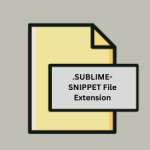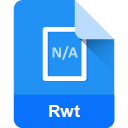.FP3 File Extension

FastReport Prepared Report
| Developer | Fast Reports |
| Popularity | |
| Category | Page Layout Files |
| Format | .FP3 |
| Cross Platform | Update Soon |
What is an FP3 file?
The .FP3 file extension is associated with FastReport, a robust and versatile reporting tool developed by Fast Reports Inc. This tool is widely used for generating, viewing, and printing detailed reports from various data sources.
The .FP3 file, known as a FastReport Prepared Report, is essentially a compiled report file that contains data, formatting, and layout information necessary for presenting a report in a read-only format.
This makes it a crucial component in environments where reporting and data visualization are key, such as business intelligence, financial analysis, and operational reporting.
More Information.
FastReport was first released in the late 1990s as a Delphi component. Its primary purpose was to provide developers with a means to create complex and detailed reports easily.
Over time, as the product evolved, the need for a standardized, portable report format became apparent. This led to the creation of the .FP3 file format.
The initial purpose of the .FP3 format was to encapsulate all elements of a report—data, layout, and formatting—in a single file. This approach facilitated easy sharing and distribution of reports without requiring the recipient to have access to the original data sources or the report design tool.
The .FP3 format ensured that reports could be viewed and printed exactly as intended by the creator, preserving the integrity and consistency of the data presentation.
Origin Of This File.
The .FP3 file format was developed by Fast Reports Inc., a company renowned for creating reporting tools compatible with Delphi, C++Builder, and other development environments.
The inception of the .FP3 file format was driven by the need for a portable and efficient way to store and distribute report data and its presentation.
FastReport, the tool that uses .FP3 files, has grown to become a significant player in the reporting software market due to its versatility and powerful features.
File Structure Technical Specification.
The .FP3 file is a binary file format that stores a comprehensive snapshot of a report. It includes the following components:
- Metadata: Information about the report, such as the title, author, creation date, and version of FastReport used.
- Data: The actual data used in the report, embedded within the file. This ensures that the report can be viewed independently of the original data source.
- Layout Information: Details about the report’s structure, including page size, margins, fonts, colors, and other formatting options.
- Report Objects: Various elements such as text boxes, images, charts, and tables, along with their positions and properties.
- Scripts: Any scripting logic used within the report for data manipulation or dynamic formatting.
The technical specifications of the .FP3 format ensures that all these components are efficiently packed into a single file, optimizing both size and performance. The binary nature of the file also adds a layer of security, as it is not easily editable without specialized tools.
How to Convert the File?
Converting .FP3 files to other formats can be necessary for broader compatibility or for further editing. This can be done using FastReport tools or third-party applications that support the .FP3 format. Common target formats include PDF, Excel, Word, and HTML. The conversion process typically involves:
- Opening the .FP3 File: Using FastReport Viewer or Designer.
- Choosing the Export Option: Selecting the desired output format from the export menu.
- Configuring Export Settings: Adjusting settings such as page range, quality, and layout options.
- Executing the Conversion: Saving the converted file to the desired location.
Advantages And Disadvantages.
Advantages
- Portability: .FP3 files encapsulate all necessary components of a report, making them easily transferable across different systems and environments.
- Consistency: Ensures that the report appears the same regardless of where or how it is viewed, preserving the intended layout and formatting.
- Independence: Reports can be viewed without requiring access to the original data sources or the report generation tool.
- Security: The binary format is less prone to tampering compared to text-based formats.
- Performance: Optimized for efficient loading and viewing, making it suitable for large and complex reports.
Disadvantages
- Editability: Once a report is saved as an .FP3 file, it becomes read-only, which means any changes require access to the original report design.
- Proprietary Format: Being specific to FastReport, it requires specific tools for viewing and converting, limiting interoperability with other reporting systems.
- Size: Depending on the complexity and data volume, .FP3 files can become quite large, impacting storage and transfer times.
How to Open FP3?
Open In Windows
- FastReport Viewer: The primary tool for opening and viewing .FP3 files. It provides a user-friendly interface with all necessary viewing options.
- FastReport Designer: Allows for both viewing and editing (if you have the original report design files).
Open In Linux
- FastReport Mono: A cross-platform version of FastReport that supports .FP3 files on Linux.
- Wine: Running Windows applications like FastReport Viewer on Linux.
Open In MAC
- FastReport Online Designer: A web-based solution that can be accessed via a browser, making it platform-independent.
- Parallels or Wine: Running a Windows environment on macOS to use FastReport Viewer or Designer.













